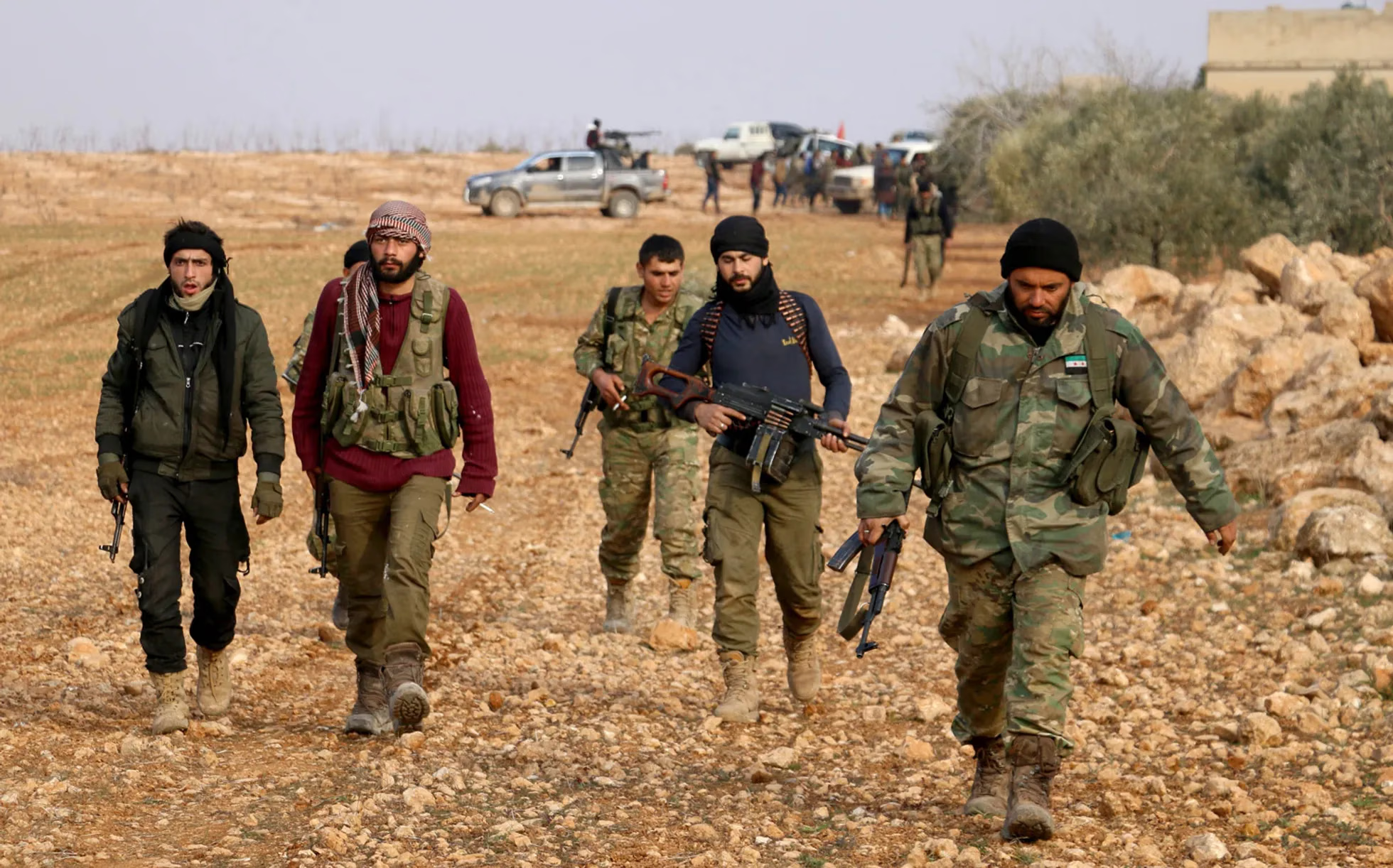According to The Wall Street Journal, the Islamic State group, defeated in Syria in 2017, is once again showing signs of resurgence amid the drawdown of U.S. forces. Journal correspondents spent a week in Deir ez-Zor province in the country’s northeast, which became the group’s main refuge after its collapse. They also spoke with commanders of U.S. troops and the Syrian Democratic Forces (SDF) in the area. According to them, the militants have changed tactics: they now operate in small units, wear no uniforms, and ambush SDF patrols along the roads.
The Islamic State emerged in Iraq in 2003 after the U.S. invasion and took advantage of the chaos sparked by the Arab Spring in Syria to seize vast territories. In 2014, it declared a caliphate, at its peak controlling an area with a population of between eight and twelve million people.
In 2017, the United States, working with its allies and the Syrian Democratic Forces (SDF), took control of Raqqa, which served as the Islamic State’s capital, forcing the group’s remaining fighters to retreat to Deir ez-Zor province. After heavy fighting, thousands of militants and their families surrendered, many of them sent to camps. The rest, The Wall Street Journal notes, “melted into sympathetic Sunni Arab communities and are trying to rebuild.”
In December 2024, the regime of Bashar al-Assad was overthrown in Syria, and power was taken by the group Hayat Tahrir al-Sham, led by Ahmad al-Sharaa. A year later, Washington began gradually reducing its military presence: since April 2025, about five hundred of the two thousand U.S. troops have been withdrawn, and several bases have been closed or handed over to SDF control. According to the Pentagon, the U.S. contingent could drop below one thousand, with the main cuts concentrated in the country’s eastern regions.
U.S. and Kurdish commanders note that the Islamic State, having turned into a “decentralized mobile underground,” has exploited the weakening U.S. presence and the fall of the Assad regime to recruit new fighters and strengthen its positions. “The withdrawal of U.S. troops is inspiring Daesh (another name for ISIS),” said Goran Tel Tamir, an SDF commander.
The Wall Street Journal reporters accompanied a Syrian Democratic Forces (SDF) patrol of more than twenty vehicles on a trip to Hajin—a city that was once a key stronghold of the Islamic State. A day before their arrival, an attack took place: ISIS militants on motorcycles opened fire with Kalashnikov rifles on a pickup truck carrying two Kurdish soldiers, killing both. The owner of a nearby shop said it was the first attack on that road. “We’re all afraid. They’ve returned to our city,” he said.
After the fall of Bashar al-Assad’s regime and the retreat of government forces, militants seized weapons depots. As The Wall Street Journal notes, they are unable to control territory but are fueling lawlessness and destabilizing the country.
According to the SDF, by August 2025 ISIS militants had carried out 117 attacks in northeastern Syria—more than in all of 2024, when there were 73. The most active assaults have been recorded in Deir ez-Zor province, where roughly three thousand fighters are concentrated. Their main targets are SDF soldiers and commanders. In May alone, ISIS carried out twenty attacks that killed ten soldiers, and in August at least seven more, five of them in a single day.
In March, SDF Military Council commander in Hajin, Khabat Shaidi, led a four-vehicle convoy on an inspection of checkpoints. Militants hiding in houses along the road ambushed the convoy with rocket-propelled grenades. Two soldiers were seriously wounded, and Shaidi himself sustained a minor injury. Later that day, he received a phone call from an unknown number. “Infidel. You survived. Next time we’ll kill you,” a voice said on the line.
According to SDF commanders, the Islamic State has adopted a new strategy. The militants no longer wear uniforms or display black flags. Most of them are Syrians, which allows them to blend easily into the local population. They operate in small autonomous cells, often without coordination among one another. Each cell receives instructions to carry out ambushes or plant improvised explosive devices. “They work in small groups—four or five people per operation. That lets them conserve resources. Each has one Kalashnikov rifle and one explosive device,” said Siyamend Ali, a representative of the SDF’s self-defense units.
Beyond attacks, the group is engaged in extortion. Oil investor Muhammad al-Bu Herdan from the town of Diban in Deir ez-Zor province said militants called him demanding he pay zakat—an Islamic tax—of one thousand dollars. According to him, such demands are common in Diban, where ISIS has many sympathizers. Soon after the call, a masked man came to his house and took the money. Two months later, another cell called with the same demand. When al-Bu Herdan replied that he had already paid, they began to threaten him. Later, he saw two men on a motorcycle near his oil processing facility. “As soon as I saw them, I knew they’d come for me. I turned the car around and drove off fast. They started shooting,” he recalled. One of his workers was killed. Al-Bu Herdan shut down his business and fled to Hajin. SDF representatives say they receive numerous reports of similar extortion cases.
Syria’s Ministry of Information acknowledged that “there is a gap in security,” as government forces are limited and do not control the entire territory of the country. Nevertheless, the ministry said security forces had eliminated Islamic State cells in Damascus and prevented several planned attacks.
Syria’s interim president, Ahmad al-Sharaa, was previously linked to the Islamic State and later joined al-Qaeda before, as The Wall Street Journal notes, “renouncing extremism” during the struggle for power. Doubts about his sincerity persist, however: some commanders of the Syrian Democratic Forces express distrust toward former jihadists who have joined the new government, believing it gives ISIS fighters room to maneuver. The Ministry of Information rejected those accusations, calling them “politically motivated and baseless.”
